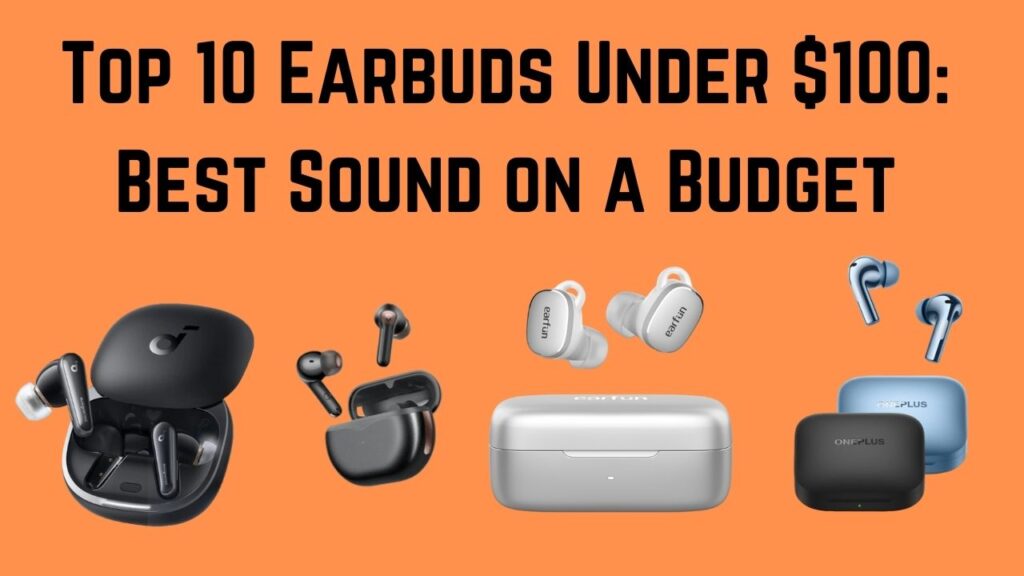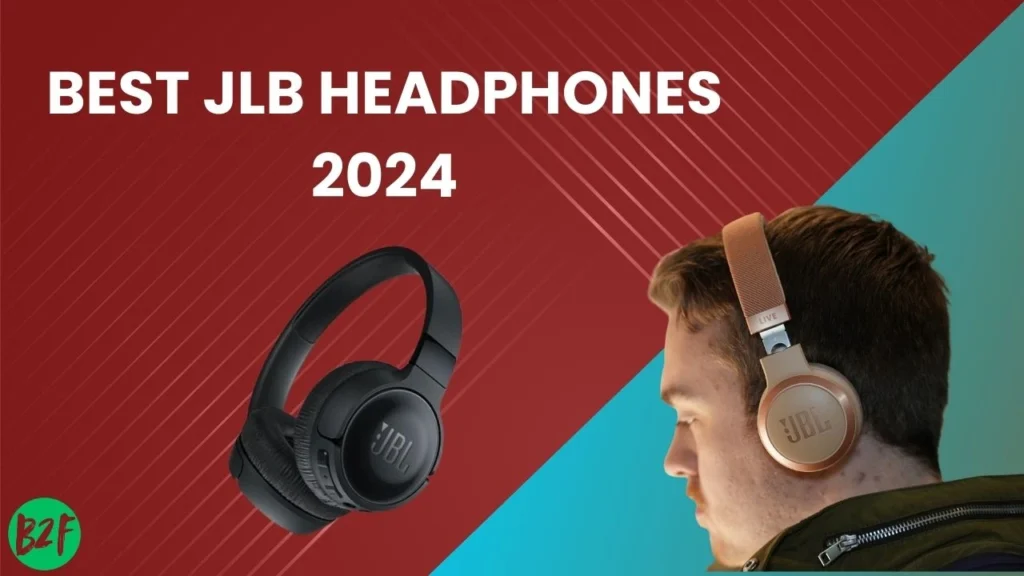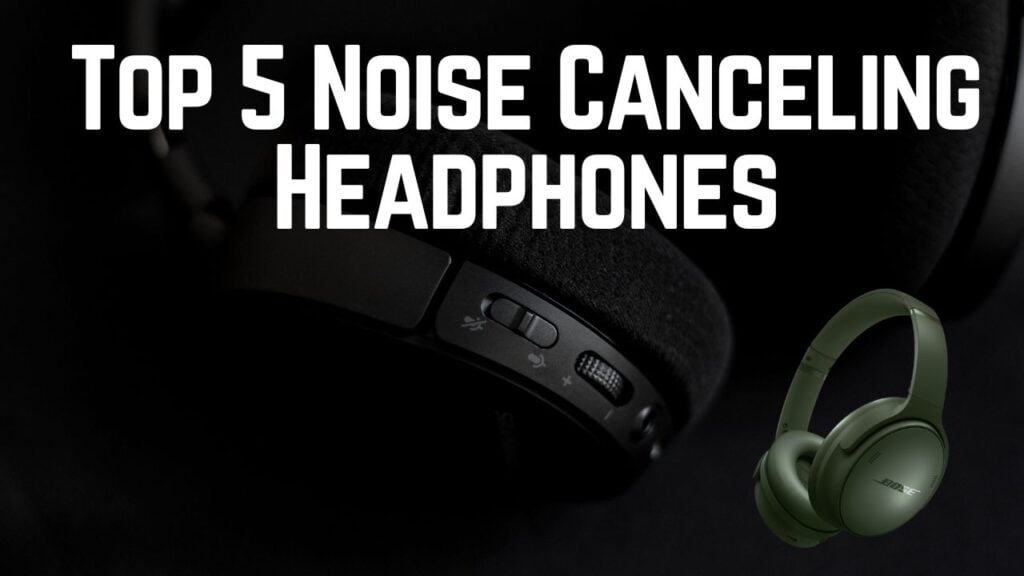Introduction
Looking for premium sound without breaking the bank? This article explores the top 10 earbuds under $100, blending affordability with high-quality audio. Whether you prioritize deep bass, noise cancellation, or comfort, these options deliver exceptional performance at a budget-friendly price.
From trusted brands like Sony, Samsung, and OnePlus, these earbuds are packed with features like wireless charging, water resistance, and customizable controls. Perfect for music lovers and fitness enthusiasts alike, this guide ensures you get the best sound without spending a fortune.Best JBL Headphones Review
Top 10 Earbuds Under $100
- SoundPates Air4 Pro
- Sony WF-C700N
- Tozo NC7
- Edifier TWS 1 Pro2
- Samsung Galaxy Buds FE
- OnePlus Buds 3
- Soundcore Liberty 4NC
- Earfun Free Pro 3
- CMF Buds Pro
- Redmi Buds 5 Pro
Comfort
- Comfort is always tricky to score because we all have different ear shapes and sizes. I’m keeping the scoring close here, but I’ll explain the earbuds in a way that helps you see if they might work for you.
- Sony 700N: A score of 7 out of 10. They have the most profound fit, which isn’t necessarily bad, but they have the most suction and pressure in the ear canal.
- Tozo NC7: Similar deep fit with slightly less pressure.
- Edifier Pro 2 and Eun Free Pro 3:A score of 7.5. These larger earbuds might not work well if you have more prominent ears, but they have a nice light feel in the ear canal. Earbuds with a score of 8 have less pressure in the ear and a lighter feel overall. Earbuds with a score of 8.5 have an even lighter feel.
- The Redmi Buds 5 Pro works best with smaller ears and has a shallower fit. The OnePlus Buds 3 is close to the CMF Buds Pro and still has a light feel but is slightly deeper.
- It depends on what kind of fit you prefer.
Security
I test all my earbuds during weight training sessions and quick runs. To keep it simple, I’m scoring most of the earbuds an 8. They work great for me during weight training, where I only need to readjust a few times throughout my workouts.
Earfun Free Pro 3: Score of 9. They come with two sizes of wing tips to increase stability, which work well for both small and large ears. I have enormous ears, and they fit securely.
Most wing tips don’t do much for me, but these wing tips are one of the few that work. The Galaxy Buds FE has a wing tip that doesn’t do much for my giant ears.
But if you have normal-sized or smaller ears, you can benefit from it. You also have the option to use no wing tip on both pairs. The Best Computer Mice to Buy in 2024.
When running, stem-style earbuds generally work better because the stem helps hold the Bud in place, minimizing body-borne noise from your movements and breathing. The Sony 700s have quite a bit of body-borne noise, which I find too distracting when running.
The Tozo NC7 has a noticeable amount, but it’s not as bad. The rest of the buds are okay, with some performing better than others. For all the nitty-gritty details, check out my spreadsheet linked below.
IP Rating
Here’s the dust and water resistance rating for all the earbuds. All the buds with an IPX4 rating are delicate for sweat and water splashes. Using them in heavy rain should be okay, but it’s not guaranteed. You’d be safer in heavy rain with an IPX5 or IPX6 rating.
Some buds also have dust resistance, with the ‘5’ replacing the ‘X.’ Only the Galaxy Buds FE have an IPX2 rating, which isn’t suited for sweat or water splashes, and you don’t want to get caught in the rain with them.
Case & Battery
This is also tricky to score. The primary considerations are earbud battery life, total life, and case size.
If the case has wireless charging, only the Sound Core Liberty 4NC and Earfun Free Pro 3 offer this feature. The most crucial factor regarding case size is how thick or thin the case is.
Here is my ranking of the instances by thickness, with the thinnest case at the top. Even the Sony 700 case is still compact, as you can see when compared to the thinnest and middle-thinnest cases.
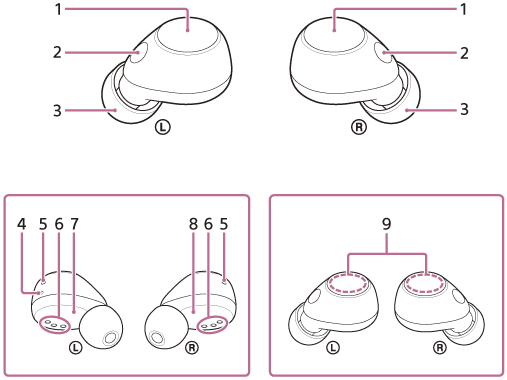
It’s worth noting that the CMF Buds Pro case looks thick because it’s not rounded, making it the most unique-looking case with its classic, out-there designs. To make this easy, here are all the scores I’m giving out, along with the advertised battery life amounts.
Sound PEATS, Tuzo, and Xiaomi are the only brands that don’t advertise battery life by noise canceling, which I find super annoying. The Tuzo NC7 battery life is impressive when noise canceling is off, but you usually lose about one-third of the battery life when noise canceling is on. Hence, the numbers I provide are just estimations.
The main things to note here are the low earbud battery life on the Edifier TWS1 Pro 2 and Sound PEATS A4 Pro, which give you only around 4 hours. The total battery life is only 15 hours on the SYou’ll0s.
You’ll need to charge that case more often. The standout here is the Eon 3 Pro, today’s cheaper buds. The Sound Core Liberty 4NC is the best over if you don’t mind a slightly thicker case.
Controls
The main things I’m looking for in controls are the number of touch control functions, whether you get wearing detection and if it works, and the amount of customization available. Let’s go through one earbud at a time:
Edifier Pro 2: Score of 6.5. You only get double and triple-tap functions. You can customize each earbud to add volume or voice assistant, but options are limited. Wearing detection works well but activates if the sensor is covered on a surface.
Galaxy Buds FE: Score of 7. You can customize a long hold to add volume or voice assistance, but you’ll lose ambient control. Wearing detection only works when you take both earbuds out. Always-on Bixby is available on Samsung devices.
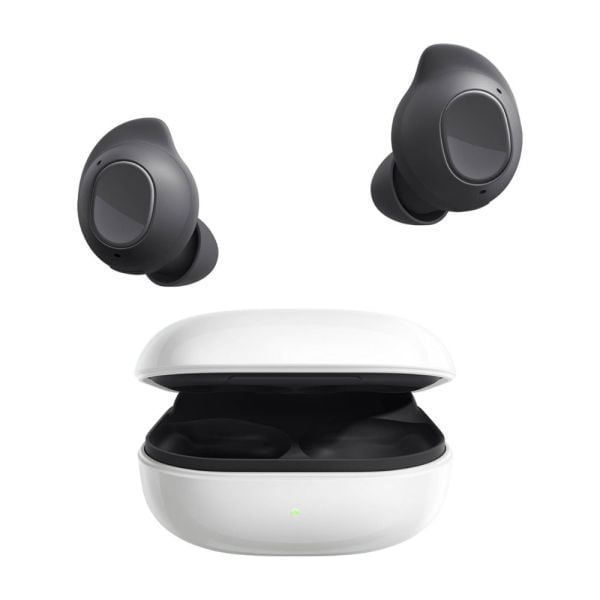
SoundPEATS Air4 Pro: Score of 7.5. You get single, double, triple tap, and extended hold functions. You can control everything except skipping tracks; there’s no customization. Wearing detection works great, but you can’t customize ambient control switches, so you’re locked to switching between transparency, noise canceling on, and noise-canceling off.
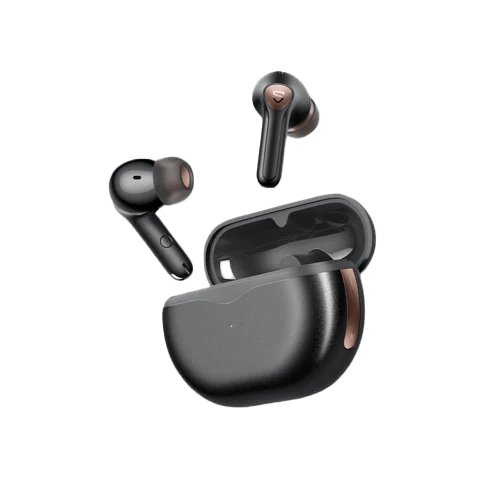
Tozo NC7: Score of 7.5. You get complete control with decent customization. Wearing detection works well unless the sensor is face down on a surfactant. You can’t turn off wearing detection.

Sony: Score of 7.5. They are the only pair with physical button controls. You can control everything, including a quad tap to adjust the volume. You get barely any customization and no wearing detection, but at least you get everything you need.
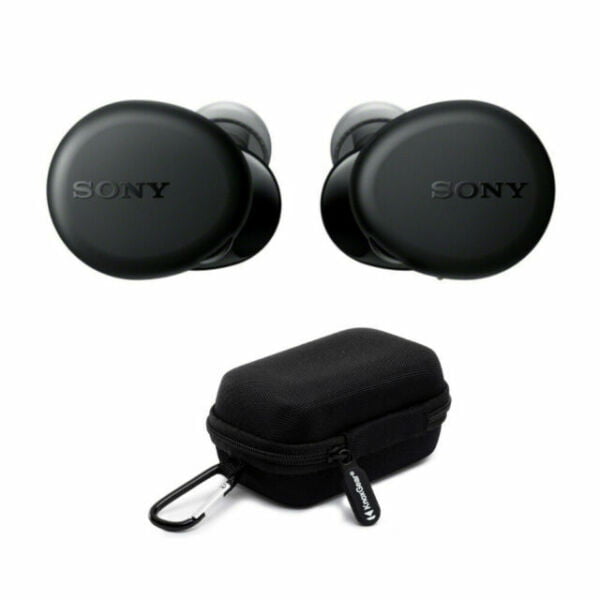
Soundcore Liberty 4NC: Full customization with everything you need. The wearing detection works excellently; the sensor can face down on a desk without activating.
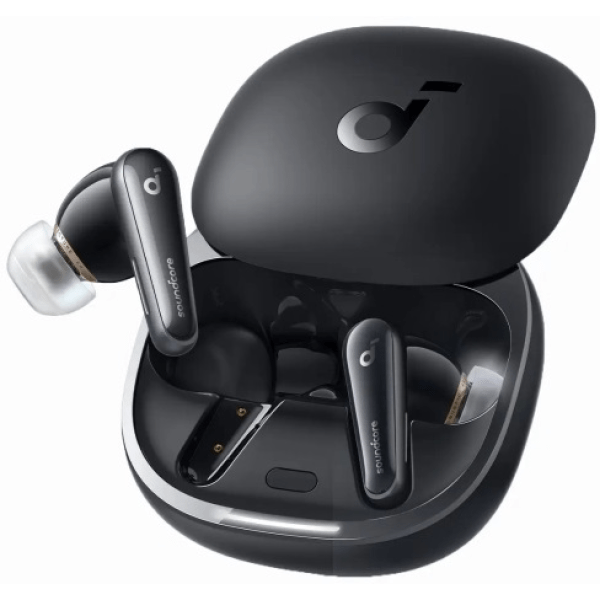
CMF Buds Pro: The exact amount of control, but the wearing detection will activate if placed face down on a desk.
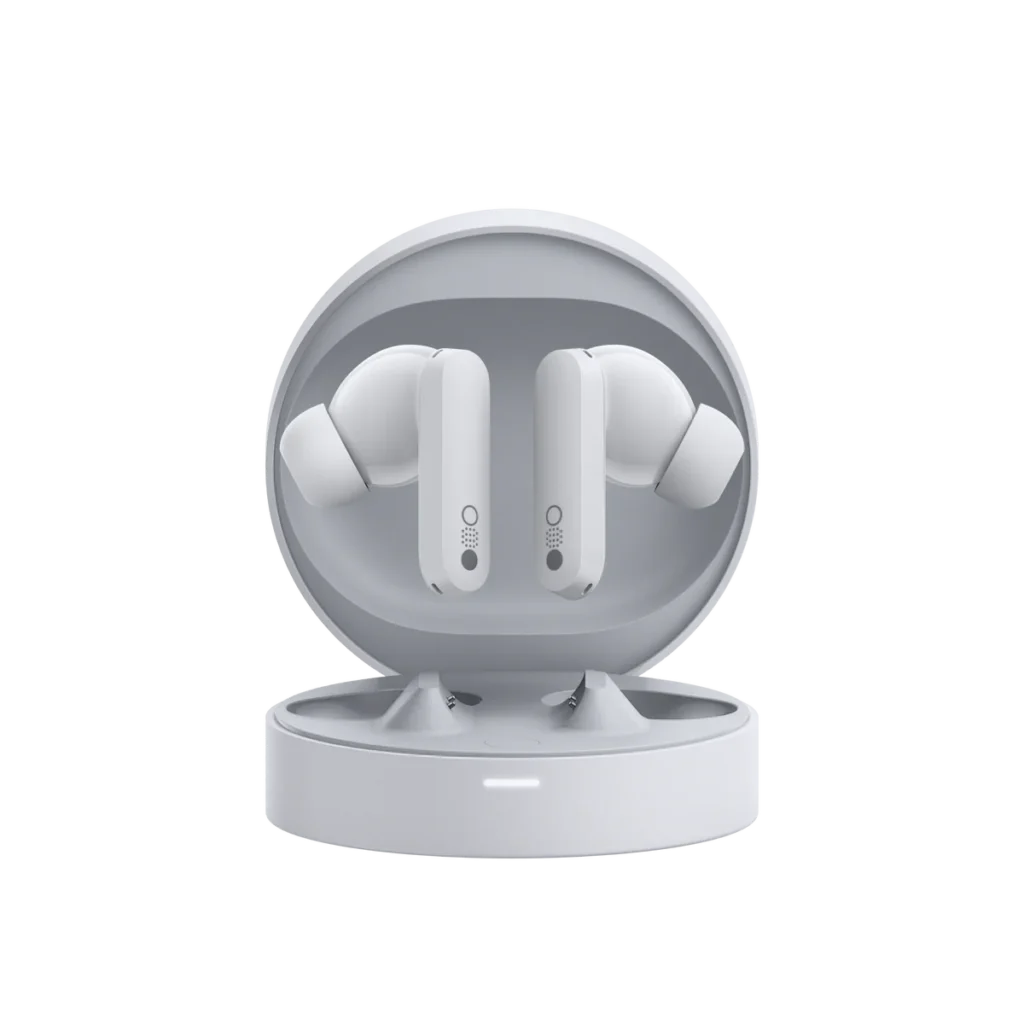
Earfun Free Pro 3: There is no wearing detection, but you have the most freedom of customization. Unlike other earbuds, which are slightly limited, you can set any function to whatever you like.
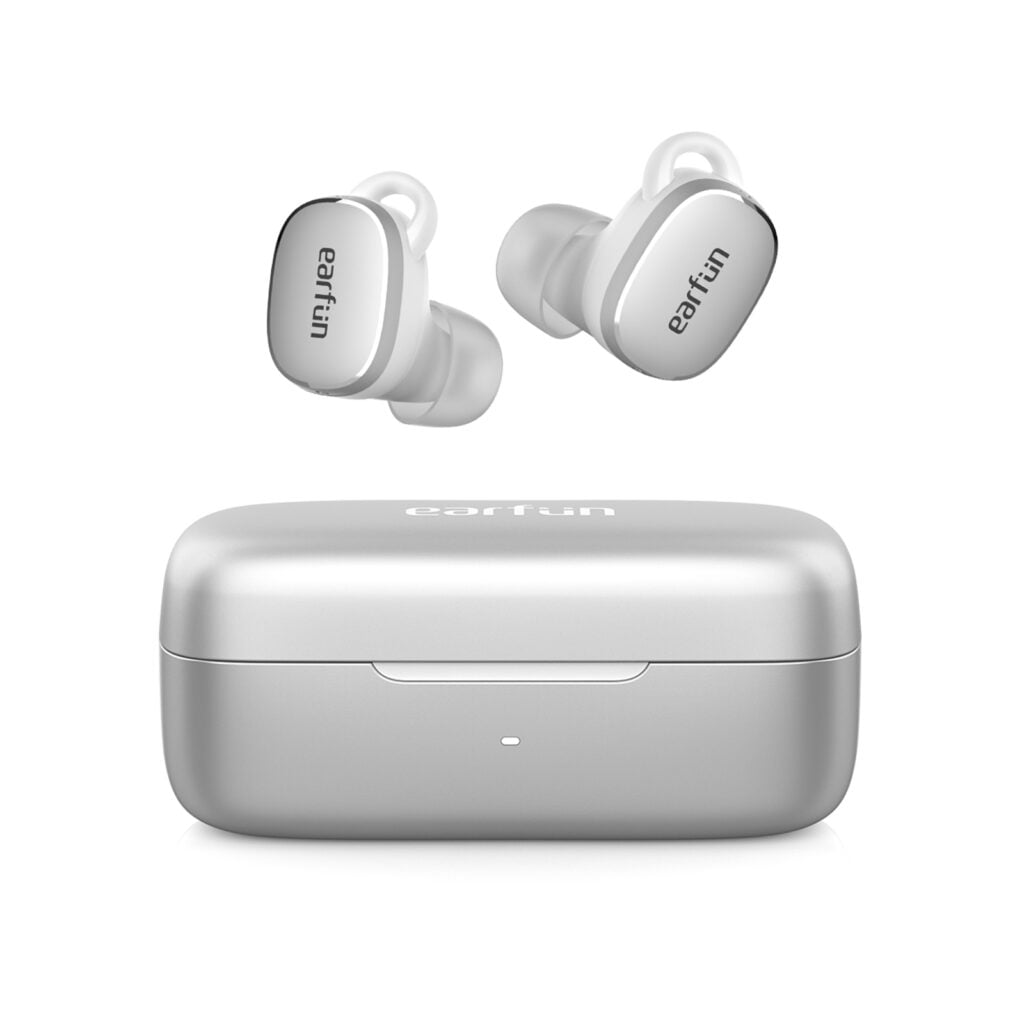
The Redmi Buds 5 Pro gets an 8.5. Solid customization allows you to control everything, and the wearing detection works even if you put the Bud in a pocket. They don’t advertise skin detection, which works like that, so they get the extra half point.

The OnePlus Buds 3 also has effective wearing detection and gets an extra point for having a swipe gesture for volume up and down or track forward and back. With these, you can control everything: play/pause, track forward and back, ambient control, and volume up and down, even when using just one earbud.
The swipe gesture to skip tracks forward and back gives you even more options. They would get a score of 10 if they had squeeze controls instead of touch, as sometimes going for the swipe can accidentally activate the single tap if you miss the swipe, but this rarely happens.
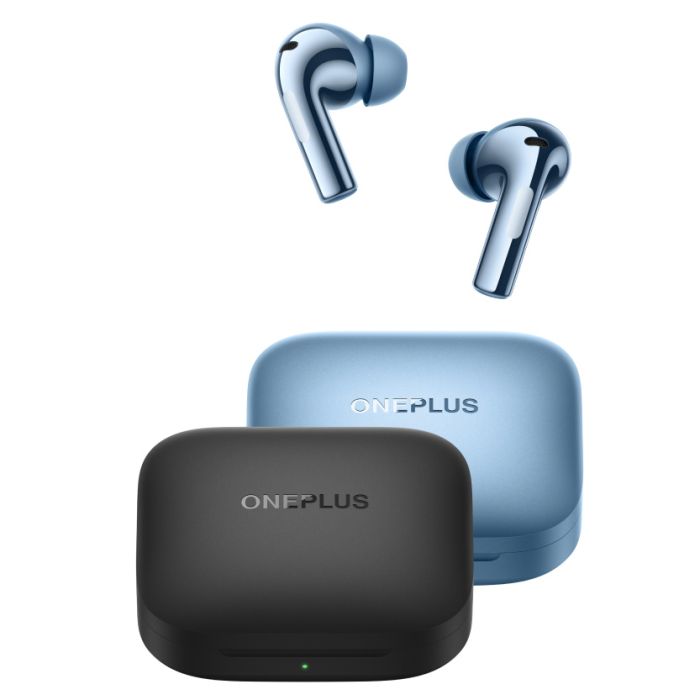
Connectivity
We’ve got a lot to let here. First, let’s start with the codecs you’re getting. If you’re looking for high-res or lossless audio, Eon, OnePlus, Redmi, Sound core, and Sound PEATS have either LDAC, LHDC, aptX Adaptive or aptX Lossless.
The Galaxy Buds FE have high-res with their Samsung Scalable Codec, but only on Samsung devices. They can stream at 24-bit/96 kHz, going just over 500 kbps, whereas LDAC and aptX Adaptive are closer to 900 kbps, LHDC goes to 1,000 kbps, and aptX Lossless reayou’s,200 kbps.
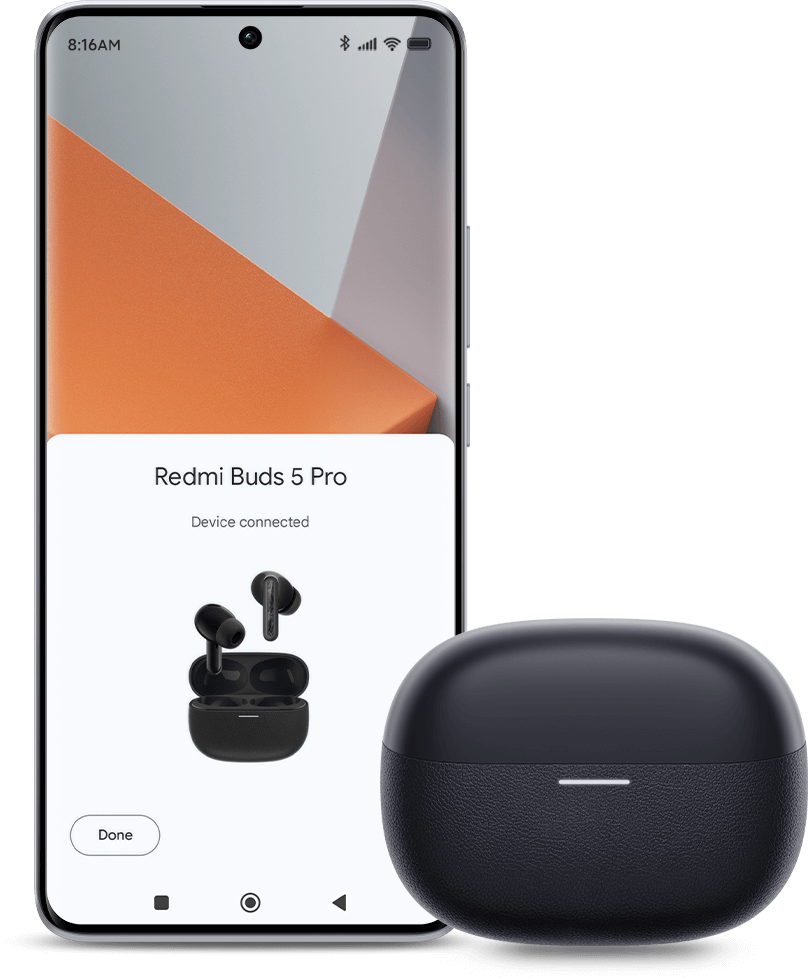
If you’re wondering, this means if you’re using any of those high-res codecs. They all sound pretty much the same to me. However, the codec only makes a tiny difference to the sound quality; what matters is how it’s tuned.
Now, let’s discuss which buds have multipoint connections. About half of the earbuds here today have them.
You can connect two devices to the earbuds simultaneously. Only the SoundPates Air4 Pro has a take on nature, so you don’t need to pause playback on one device before switching to another.
For other earbuds with multipoint connections, you must manually switch. Does Buds FE not support multipoint connections but offer seamless switching between Samsung devices?
Ulet’s & Feature
Now, let’s discuss single earbud use. All the earbuds mentioned today allow you to use one earbud while the other stays in the case. However, not all support mono mode, which lets you hear left and proper audio channels through a single earbud. Only half of the earbuds here support mono mode. Acer Nitro V16 Review
Finally, these earbuds feature a low-latency gaming mode for mobile gaming and fast-paced games like shooters. If you want specific millisecond readings, let me know in the comments. I will add this information to the spreadsheet if there’s enough interest.
Considering all factors, the Sound Pates score a perfect 10 out of 10 for connectivity. You can find a detailed comparison on my spreadsheet.
Call Quality
Moving on to call quality, I conducted three tests: a quiet room simulation, loud kid noise (to mimic spontaneous voices), and a windy city simulation with construction noise.
The final score is the average of these tests. I’ll share some samples shortly, as some earbuds struggle with wind noise andante. But first, you can’t mute your microphone using these earbuds.
The touch controls on the earbuds mentioned today, including the Eun 3 Pro 3, Soundcore Liberty 4NC, SoundPates A4 Pro, and Tozo NC7, do not allow you to switch between noise-canceling and transparency modes during a phone call.
When you answer a call, you’re stuck with the last setting you used, which can be pretty frustrating.
Edifier TWS 1 Pro2 is the only earbud with a self-voice feature that allows you to hear your voice, but the quality isn’t excellent. I prefer using transparency mode during calls, as it provides clearer audio.
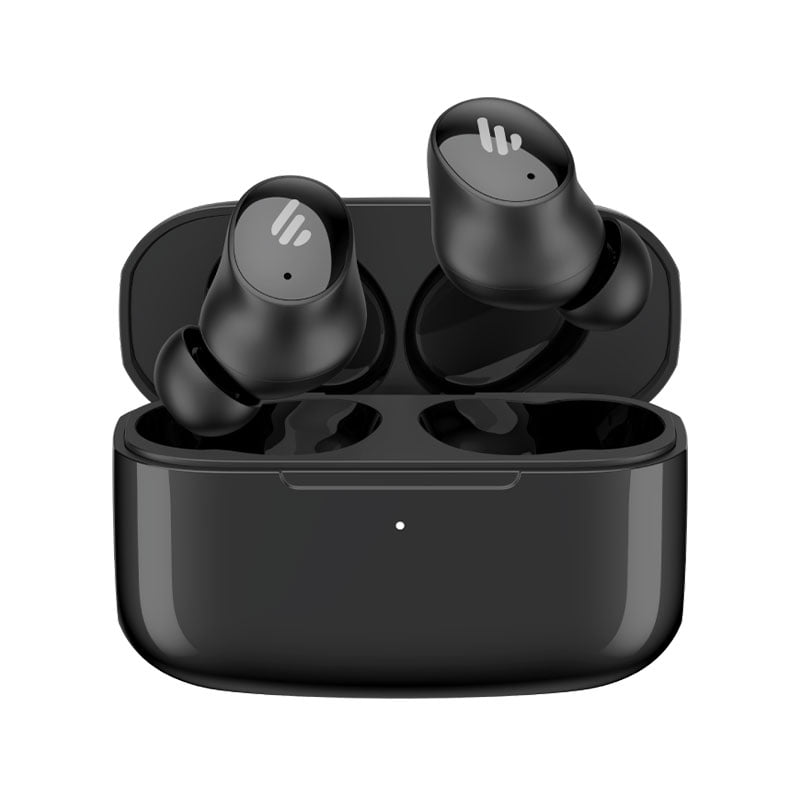
App/Extras:
For app customization, I’ve extra features. I’ve already covered aspects, but here’s a brief overview:
SoundPates: It has a score of 6. It offers a band EQ with presets, but the hearing test doesn’t work, and the controls can’t be customized; they can only be turned on/off.

Edifier: It has a score of 6.5. It provides EQ presets, control customization, noise-canceling options, wind noise reduction, an ear-de” action toggle,” and a “find my buds” feature.
Tozo: A score of 7. Includes EQ band and presets, solo control customization, noise canceling strength, and wind noise reduction.
Sony: A score of 7. Features solid EQ, transparency customization, and niche extras like adaptive sound control.
The earbuds also feature 360 audio, similar to spatial audio, but only work with compatible apps. The CMF Buds Pro Gen 8 uses the regular Nothing X app, which has a great layout. The band EQ sounds strange, but since the buds are not officially released yet, this might be fixed with a firmware update.
You get excellent control customization, noise-canceling strength options, a wearing detection toggle, a low-late “cy game mode,” and a”find my bud” feature with a beep.
Xiaomi Buds score an 8. They offer a remarkable EQ, noise-canceling customization based on the” on your ear” type, a” find my bud” feature with a beep, a low-latency game mode, and a wind noise reduction toggle.
The Galaxy Buds FE also score an 8. They only offer EQ presets, so there is no band customization. Control customization is limited, but they have helpful” extra features ” like”find my bud” based on location, always on Bixby for Samsung devices.
Notifications read aloud on Android devices and audio accessibility with left and right audio balance. You can also customize the transparency mode quite a bit.

The Redmi Buds 5 Pro scored an 8.5. It uses the Chiai Ebds app, which requires account creation. The app has everything you need: a band EQ with presets, a wearing detection toggle, personalized noise doesn’t (though it doesn’t do much for me), and isn’t audio (which isn’t very good).
The OnePlus Buds 3 scored a 9. They use the HeyMelody app, available on iOS and Android (except for the Galaxy Buds FE app, which is Android-only). The HeyMelody app offers everything.
Including a solid hearing test for personalized sound and some of the best spatial audio. I’ve tested it in any earbud, regardless of price. The only thing missing is a wearing detection toggle.
Soundcore scores a 9.5. It offers everything mentioned plus extras like safe volume listening and a wind reduction toggle. The app is super reliable and has a great UI. It also has spatial audio, but it’s the Redmi Buds; it’s not very good.
The earbuds use microphones to block out external sounds but often pick up wind noise quickly. Some models have automatic wind noise reduction built in, while others offer a toggle to turn it on or off.
Explaining each earbud individually would take too long, so feel free to pause here and check if this feature is essential to you.
Next is EQ shift, which refers to how your sound quality changes with different modes: noise-canceling on, noise-canceling off, and it’s transparency mode. It is good to see that most earbuds have minimal EQ shift when switching between noise-canceling and transparency modes, which are the two most used options.
However, turning noise-canceling off usually results in the most significant change, affecting either thebaI’vetreblee or both. I’ve represented this as a rough bracelet here.
Finally, let’s talk about single earbud use. Can you use noise cancellation with just one earbud while the others are in the case? It’s nice to see that most pairs support this feature. If you find this information helpful, please give it a like.
Transparency Mode
Now, onto transparency mode. Here are the scores, considering how clear and natural the transparency mode sounds, the amount of white noise hiss, and occlusion (the blocked feeling in your ear canal when speaking with transparency mode on).
The SoundPates Air4 Pro has the best transparency mode, making it easy to hear surroundings and voices, though it has moderate white noise hiss and some occlusion.
The Galaxy Buds FE are not as clear but have less white noise and occlusion. Some earbuds offer customization options to focus on voices instead of surroundings, but I prefer a transparency mode that works well for both without needing adjustments.
Volume
Finally, let’s discuss sound quality, starting with volume. Here are the results from my max volume test. Compared to my previous tests, most earbuds are louder than average.
The Pro 2, with the lowest dB at 113, is still incredibly loud. Anything over 100 dB can start to cause hearing loss.
Here is listening; here’s a rough ranking. None of the earbuds use a special EQ to boost bass and treble at lower volumes; we naturally hear these frequencies less. The tuning matters here; more shaped tuning will naturally sound better at lower volumes. Most earbuds are excellent at low volumes, but they all sound good enough.
Now, onto the sound quality itself. This assessment is based on my favorite EQ customization. Even the lowest-ranked earbuds still sound decent. The sound quality of budget earbuds has improved significantly in recent years.
Tozo NC7:A score of 6.5. This has the most V-shaped tuning, with boomy bass, recessed mids, and overly boosted upper treble. While the treble is detailed and well-separated, the soundstage feels slightly closed. 5 Best Laptops for Students.
Redmi Buds 5 Pro: This has a score of 6.5. Without EQ, they sound very flat, which some might prefer. I boosted the bass and treble, but it only helped so much. Overall, they offer a balanced tuning with forward and clear mids. The spatial audio without head tracking is relatively poor and not very usable.
Edifier TWS 1 Pro 2: A score of 7. They only offer presets and no band EQ customization. I like the rock preset, but the treble can be harsh. Classic or pop presets sound the best to me. They have balanced tuning with a slightly boosted punchy sub-bass. The soundstage is decent, but the mids can be shouty, and the treble can sometimes get messy.
The upper is somewhat lacking, so you don’t get much sparkle. However, the lower treble is too boosted, which causes some sibilance and sometimes makes the sound slightly off. I experimented with the Spotify EQ, reducing the treble and upper mids, which helped a bit. Using an external EQ can also improve this.
The CMF Buds Pro scored a 7.5. Their focus is on the bass, as advertised on their website. You get boosted sub-bass with a subwoofer-likIt’sell, which is a bit boomy. It’s not a punchy bass response, but it’s not overly messy. The mid-range is super smooth, with natural but clear vocals.
The treble is darker, providing just enough to stand out from the bass but without fantastic detail the bass-boosted tuning results in a somewhat inaccurate soundstage. The band EQ doesn’t sound good, and the buds sound strange. I think this can be fixed with an afI’llaree update, and if it is, I’ll update my comment below.
The Eon Free Pro 3 Score a 7.5. The stock tuning is just okay. I prefer a bit of your treble boosting, so you’re getting a V-shaped tuner with a nice sub-bass that’s a bit boomy. The vocals are slightly recessed but still cut through nicely. The treble has a nice sparkle, and you get a pretty open soundstage.
The Soundcore Liberty 4 NC Scored an 8. They include a hearing test, which works great for me. I use it to boost the mids and treble slightly, and you can EQ the buds further after the hearing test. This results in a bass-boosted tuning with solid clarity, excellent vocals, and detailed treble.
The soundstage is a bit average, but not too bad. The 3D surround is like their spatialIt’sioo without head tracking. It’s slightly better than the Redmi Buds, but I Wouldn’t call it usable.
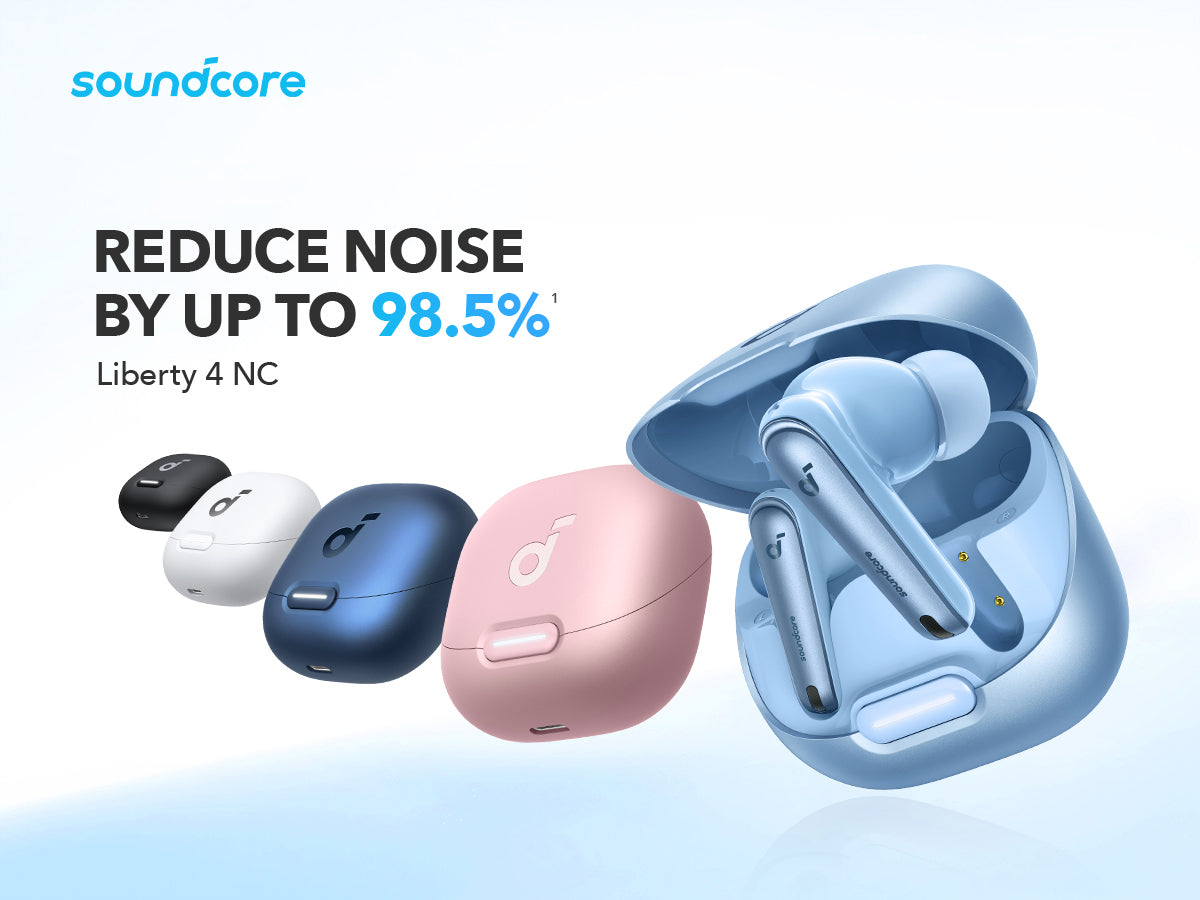
The SoundPEATS Air4 Pro Score an 8.5. The stock tuning is a bit flat for me, needing some bass and a lot of treble boosting. After EQing, they sound imposing. They have the punchiest bass response out of all the earbuds, but you still get a tasteful amount of sub and mid-bass.
The mids are slightly boosted, with forward but natural vocals. The treble response is smooth, and even with EQing, it still lacks detail and sparkle. Combit’ ss has an open soundstage and nice, clean, and energetic tuning.
Finally, two buds scored 9, starting with the Sony 700s. After some bass and treble boosting—my go-to EQing—they deliver an excellent dynamic sound. The bass is full but still punchy, and the mids are rich, with both male and female vocals standing out the best.
Among all the buds reviewed today, the treble is smooth with a subtle boost in the upper range, adding a bit of sparkle without ever becoming harsh. The Galaxy Buds FE sound similar but emphasize the sub-bass more than the mid-bass.
The vocals aren’t as forward, but the treble has a bit of extra detail and sparkle. Both have a nice open soundstage, but the EQ presets on the buds aren’t that great.
The OnePlus Buds 3 score is 9.5, slightly better than Sony and Samsung. They offer band EQ presets and a bass wave slider, focusing more on sub-bass while maintaining clarity. They also have a hearing test that works well.
I prefer using the hearing test and setting the bass slider to one, which provides the best overall bass response—a perfect balance of mid and sub-bass for a complete, rich response with a bit of punch.
The mids are slightly recessed but still sound great. The standout feature is the treble, the nicest among all the buds reviewed today. They strike an outstanding balance of detail and sparkle, making female vocals sound great, and high hats and crashes have a nice ring and sparkle.
This results in solid instrument separation and a soundstage that is on par with Sony and Samsung. The spatial audio is decent, comparable to the Denon Pearl Pro, which costs as much.
Although there’s no head tracking, it opens the soundstage without adding too much echo and reverb, making it usable and fun to play around with. However, I prefer that spatial audio off.
That’s why I created my custom scoring spreadsheet, which is free to download and linked below. It includes every score, notes for each score, specifications, and a core quality section. It’s a personalized scoring system that you can have some fun with.
Overall
Here are the final scores: The Eon 3 Pro 3 and Galaxy Buds FE tied for third, with 80.5 out of 100. The Soundcore Liberty 4 NC came in second with 81 points, and the OnePlus Buds 3 won by a landslide with an anI’veutt of 100, the highest score ever given. There will always be certain factors that determine whether a Bud works for you.
I can easily say that if you’re asking Bud, the best is to get which Buds 3. For the price you’re paying, they outperform most premium earbuds, even those costing five times as much.
FAQs
1. What are the top earbuds under $100?
The top earbuds include models like SoundPEATS Air4 Pro, Sony WF-C700N, Tozo NC7, and Samsung Galaxy Buds FE.
2. Are these earbuds good for workouts?
Most models are rated 8/10 for stability during workouts, with Earfun Free Pro 3 scoring a 9 due to their secure fit.
3. Do these earbuds have noise-canceling features?
Yes, many of the listed earbuds offer noise-canceling options like Soundcore Liberty 4NC and Tozo NC7.

